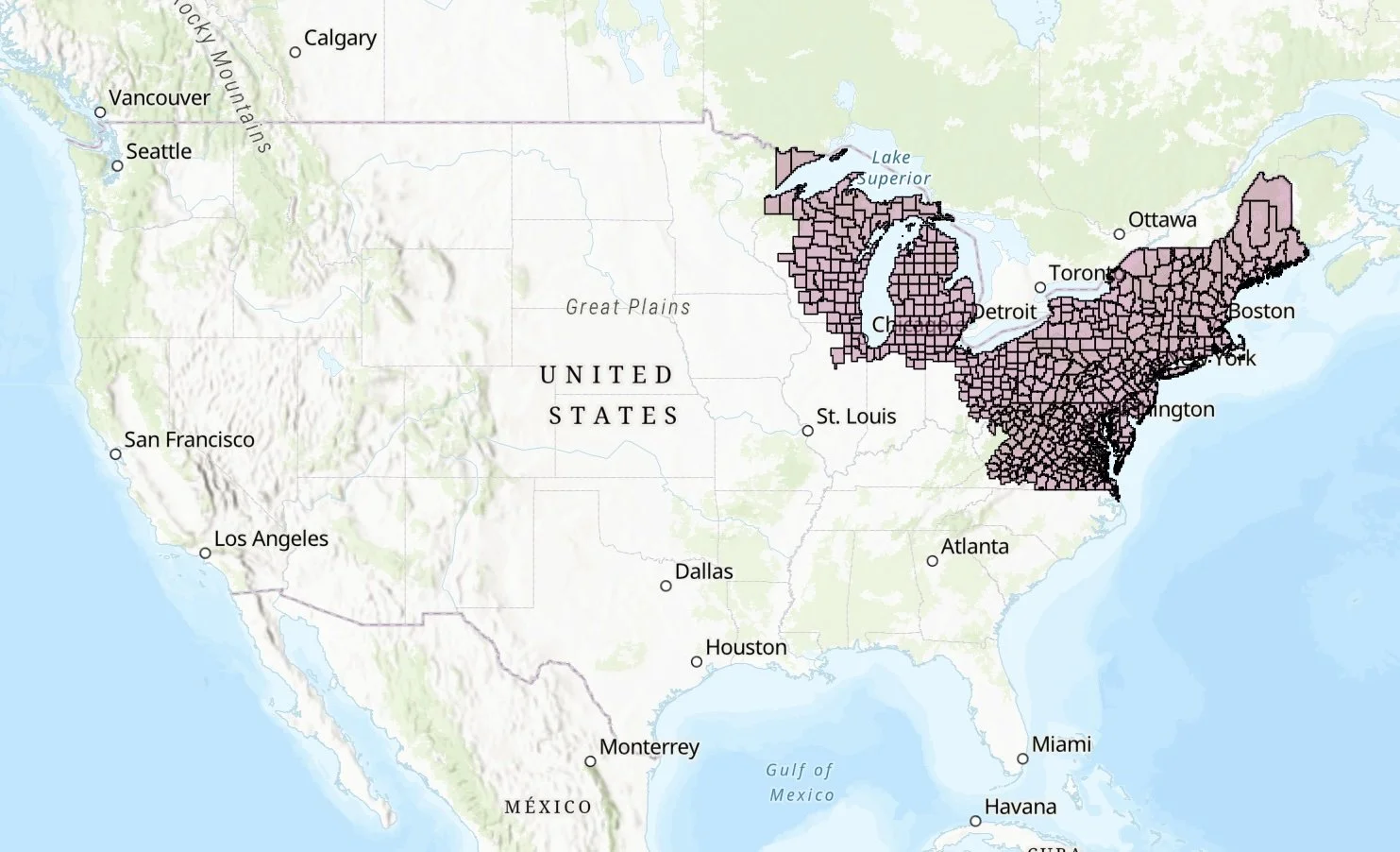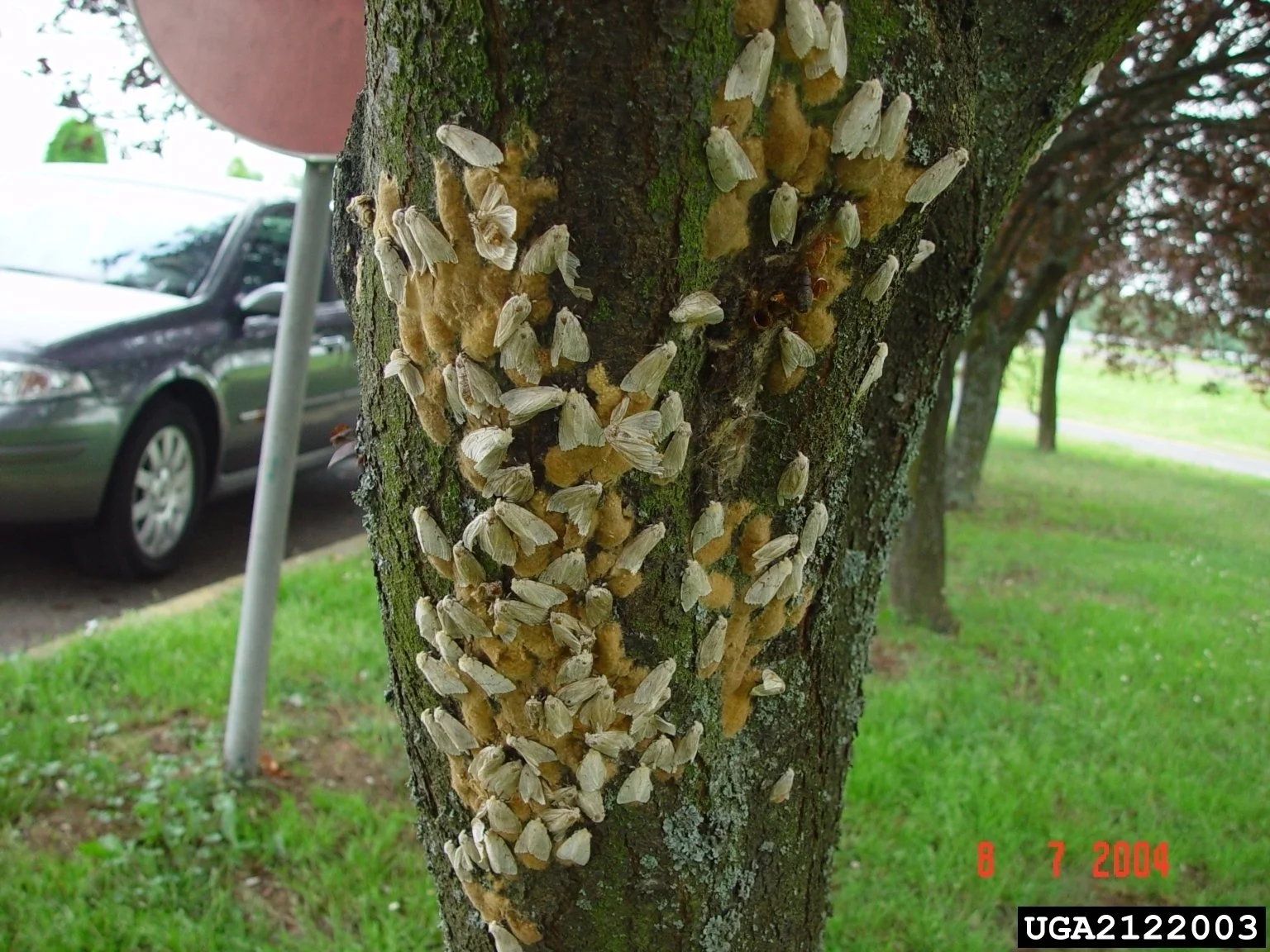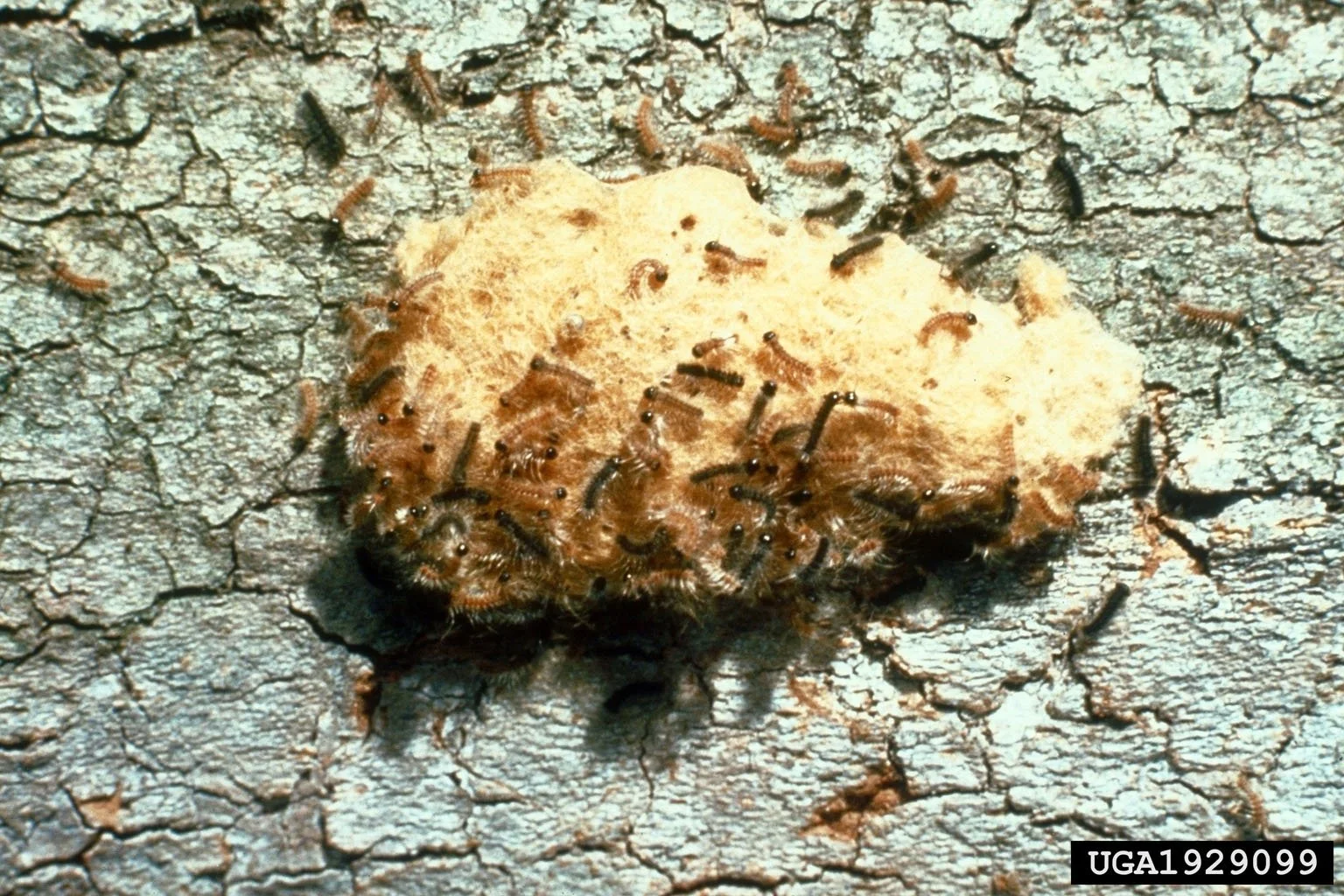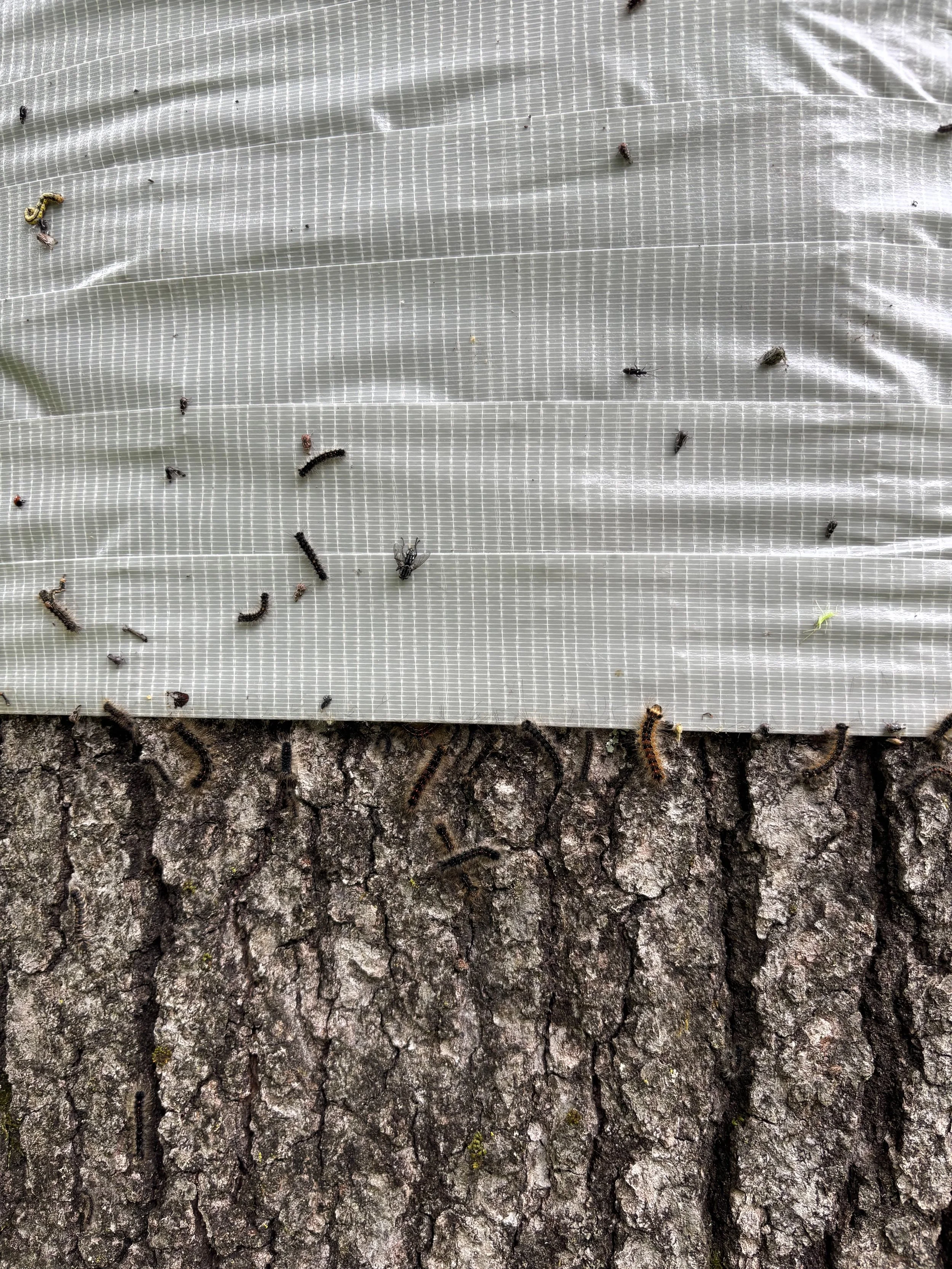How to fight Spongy Moths
/There are several phases of the spongy moth and so we are going to cover each season in their cycle:
Key Actions in Summer: when the caterpillars turn to moths!
Look for egg masses: These are tan or buff-colored, fuzzy-looking patches about 1–2 inches long. You’ll find them on tree trunks, outdoor furniture, fences, firewood, and even house siding.
Destroy egg masses: Scrape them off into a bucket of soapy water to kill them. Simply crushing them won’t always be effective.
Monitor for adult moths: Males are brown and fly actively during the day; females are white and flightless, often resting on tree trunks.
Why It Matters
Spongy moths can cause severe defoliation, especially on oaks, birch, and other hardwoods. A healthy tree can usually survive one season of defoliation, but repeated damage over several years can lead to tree death, especially during drought conditions.
So while the feeding frenzy may be over by August, now is the time to be vigilant about egg mass removal to reduce next year’s population and protect your trees from future outbreaks.
Late Summer/Fall (and even through the winter) Look out for Spongy Moth Egg Masses!
Look for spongy moth egg masses on trees, lawn furniture, fences, walls, outdoor items! Spongy moths, when they emerge from the egg masses will defoliate trees where ever they are.
We are in the Federal Spongy Moth quarantine area (as shown on the map), which means we all need to be inspecting our yards and outdoor structures, trees, furniture, etc. for egg masses and destroy them.
Here's a check list of the places to inspect, including sheds and fences.
What To Look For:
Egg masses (late summer, winter and spring)
Female moths attach egg masses to trees, stones, walls, logs, and household items, such as patio furniture, children’s toys, and lawn equipment.
Each egg mass contains up to 1,000 eggs and is covered with buff or yellowish “hair” (from the abdomen of the female).
Egg masses are about 1-1/2 inches long and 3/4-inch wide on average.
What to do?
Remove and destroy any egg masses or life stages you find.
Scrape them off with a putty knife, stiff brush, or similar hand tool. (Victoria has had a lot of success using a wide-mouth plastic ice-tea bottle. She uses the edge of the bottle to scrape the egg masses directly into the bottle and there's no need for another tool.)
Dispose of egg masses and other life stages in a container of hot, soapy water, or place them in a plastic bag, seal it, and set it in the sun.
You can also use Neem Oil neem oil on the egg masses, which disrupts the growth and development of pest insects and has repellent and antifeedant properties. Best of all, it’s non-toxic to honey bees and many other beneficial insects.
Adult females laying egg masses in late summer. USDA Photo.
Larva emerging from egg mass in early spring. USDA Photo.
Check out all the phases of the destructive pest on the USDA site.
What to do in May and June:
Stop those Spongy Moth Caterpillars in their tracks!
A client recently came across a method on Facebook for controlling spongy moth caterpillars, and it appears to be working well on the two large oak trees in her front yard!
The technique involves wrapping the trunk of the tree at least four times with duct tape, starting with the sticky side facing the bark. This creates a secure base layer. Then, on the fifth wrap, you twist the tape so the sticky side is facing out and wrap it over the previous layers. The result is a sticky outer barrier that traps or repels caterpillars as they try to climb the trunk.
This method is a simple, low-cost way to reduce the number of spongy moth caterpillars reaching the tree canopy, where they can do significant damage to foliage.
However, it's important to note that it only targets caterpillars crawling up the trunk. It won’t stop the airborne larvae that travel by releasing silk threads and drifting through the air, so it’s best used as part of a broader pest management strategy. In addition, you can use a spray bottle filled with dish soap and water to directly kill caterpillars on the trunk or lower branches (however high up you can reach.)
For best results, combine these approaches with regular monitoring and consider removing egg masses when spotted, especially in late summer and fall.
And there is a glimmer of hope coming from above: birds!
Grackles, crows, blue jays, and other insect-eating birds have been observed feeding on the caterpillars, especially when populations are high. These birds can be valuable allies in managing outbreaks, as they actively hunt the larvae both on the ground and in the trees.
Encouraging birds in your yard by maintaining native shrubs, offering clean water sources, and avoiding broad-spectrum pesticides can help support this natural pest control. While birds alone may not eliminate the infestation, they play an important role in keeping caterpillar numbers in check as part of an integrated approach.








